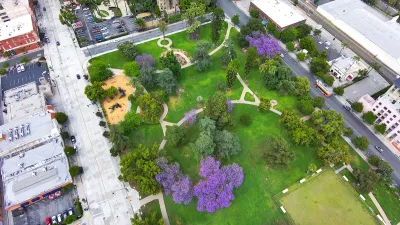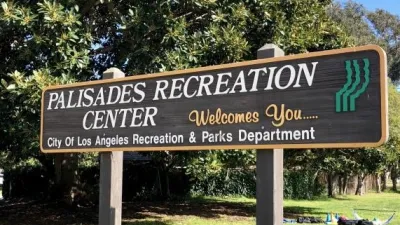L.A. County's Parks and Rec Dept. has just completed a major study of the county's park needs. Departmental Facilities Planner Clement Lau explains the study and below are a few things that came to light.

The Los Angeles County Department of Parks and Recreation (DPR) just released its Los Angeles Countywide Parks and Recreation Needs Assessment report. The release culminated a 15-month effort by DPR that started in March last year, writes Departmental Facilities Planner Clement Lau.
The study, he explains:
- Uses a set of metrics to measure and document park needs for each study area;
- Establishes a framework to determine the overall level of park need for each study area;
- Offers a list of priority park projects for each study area;
- Details estimated costs for the priority park projects by study area;
- Builds a constituency of support and understanding of the park and recreational needs and opportunities; and
- Informs future decision-making regarding planning and funding for parks and recreation.
Thousands of residents participated in workshops across the county, revealing a high level of interest in park and recreation issues. Community workshops were facilitated by the lead agency in each study area which was either an individual city or the County. (A few cities and the County opted to use community-based organizations as facilitators for a number of the meetings.) Facilitators were provided with various resources, including a group training session, a Facilitator Toolkit in print and digital formats, and a $2,500 stipend to cover workshop expenses. Translation of workshop and outreach materials were also available in Spanish, Chinese, Korean, and Armenian.
- [M]ore than half of L.A. County residents live in areas of very high or high park need.
- Study areas with Very High park need have an average of just 0.7 acre of parkland per 1,000 residents and areas with High park need have an average of 1.6 acres of parkland.
- A total of 200 new park projects were prioritized in 138 study areas.
- The total rough order-of-magnitude cost to implement park project identified by communities and managing agencies, as well as deferred maintenance, is $21.5 billion.
- This consists of $8.8 billion for prioritized projects, $12 billion for deferred maintenance, and $0.7 billion for specialized facilities.
On July 5, 2016, the Board of Supervisors adopted the Countywide Parks Needs Assessment and voted in support of placing a parks funding measure on the November ballot. The “Safe, Clean Neighborhood Parks, Open Space, Beaches, Rivers Protection and Water Conservation Measure” would add a parcel tax of one-and-a-half cents per square foot of development.
FULL STORY: Parks and Recreation Needs Assessment: The L.A. County Story

Planetizen Federal Action Tracker
A weekly monitor of how Trump’s orders and actions are impacting planners and planning in America.

Maui's Vacation Rental Debate Turns Ugly
Verbal attacks, misinformation campaigns and fistfights plague a high-stakes debate to convert thousands of vacation rentals into long-term housing.

Restaurant Patios Were a Pandemic Win — Why Were They so Hard to Keep?
Social distancing requirements and changes in travel patterns prompted cities to pilot new uses for street and sidewalk space. Then it got complicated.

In California Battle of Housing vs. Environment, Housing Just Won
A new state law significantly limits the power of CEQA, an environmental review law that served as a powerful tool for blocking new development.

Boulder Eliminates Parking Minimums Citywide
Officials estimate the cost of building a single underground parking space at up to $100,000.

Orange County, Florida Adopts Largest US “Sprawl Repair” Code
The ‘Orange Code’ seeks to rectify decades of sprawl-inducing, car-oriented development.
Urban Design for Planners 1: Software Tools
This six-course series explores essential urban design concepts using open source software and equips planners with the tools they need to participate fully in the urban design process.
Planning for Universal Design
Learn the tools for implementing Universal Design in planning regulations.
Heyer Gruel & Associates PA
JM Goldson LLC
Custer County Colorado
City of Camden Redevelopment Agency
City of Astoria
Transportation Research & Education Center (TREC) at Portland State University
Jefferson Parish Government
Camden Redevelopment Agency
City of Claremont





























